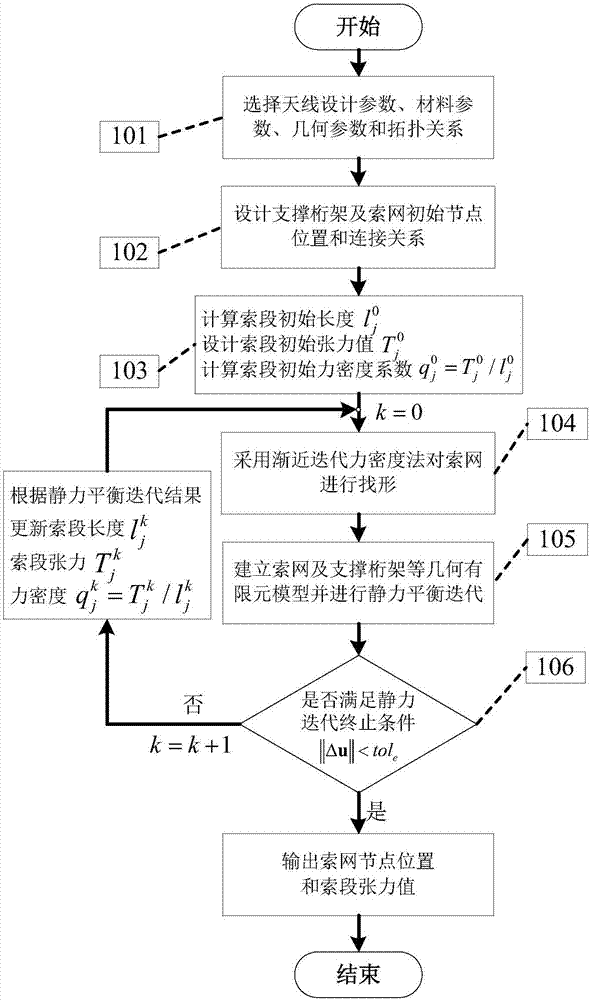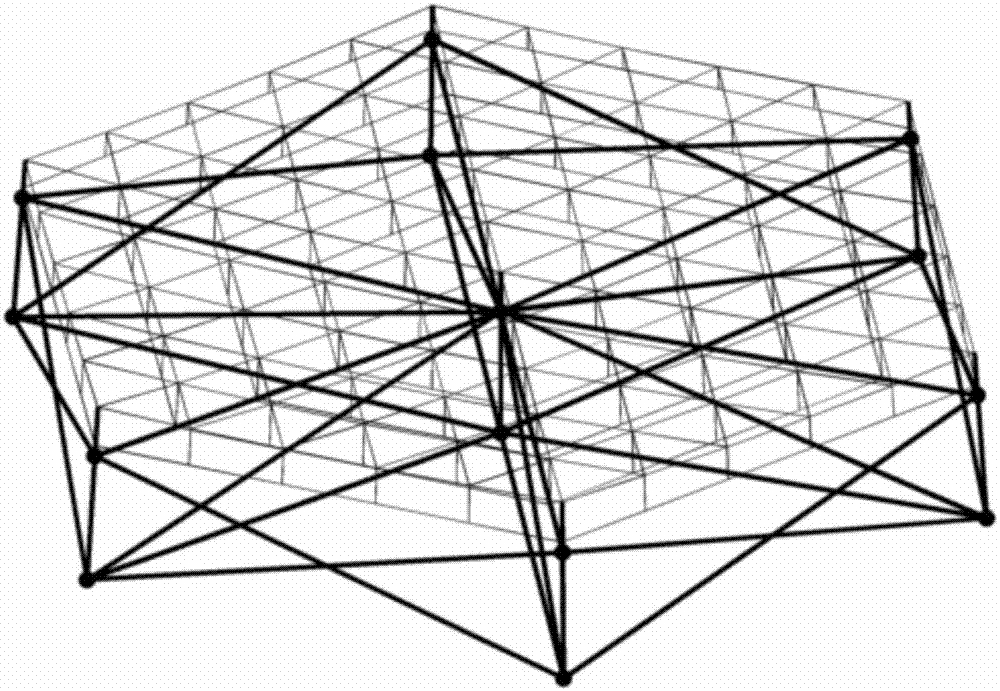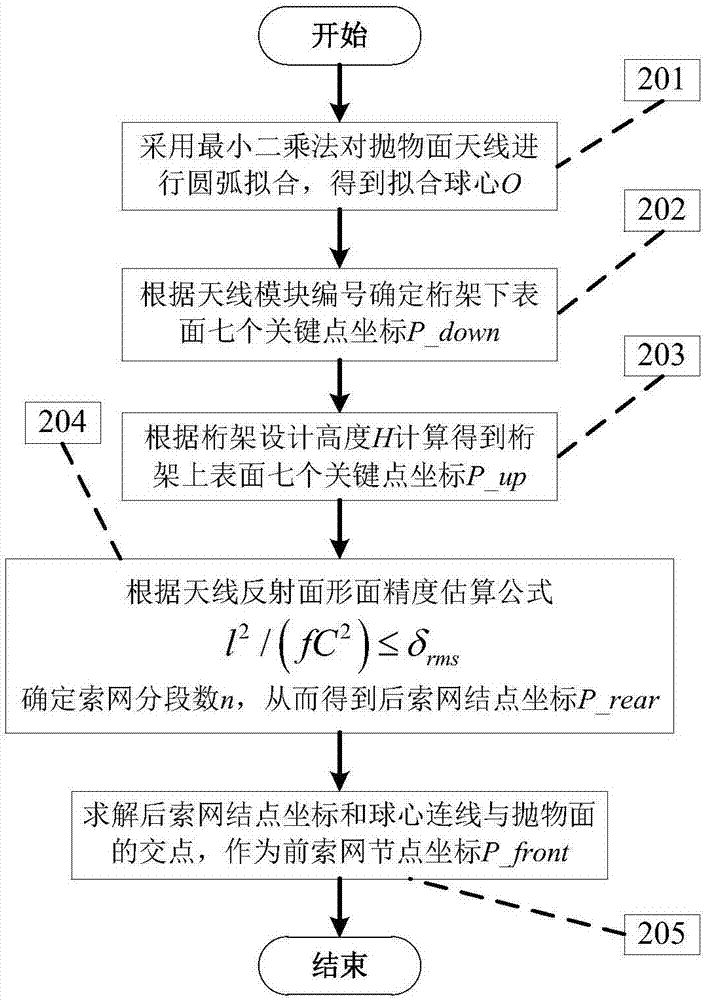Isogeometric form-finding method for space truss cable-net antenna
A technology of cable-net antenna and space truss, applied in the field of geometric form-finding, can solve the problems of inability to obtain the shape and surface accuracy of the reflective surface that meets the engineering precision, the failure of the form-finding task of the antenna reflective surface, and the poor uniformity of the tension of the cable segment, etc. Surface accuracy, wide application range, and the effect of improving form-finding accuracy
- Summary
- Abstract
- Description
- Claims
- Application Information
AI Technical Summary
Problems solved by technology
Method used
Image
Examples
specific Embodiment approach
[0049] The following is a description of the geometric form-finding method, taking the hexagonal prism module cable-net antenna as the object. The specific implementation is as follows:
[0050] Step 101: For the hexagonal prism module cable net antenna such as figure 2 As shown, given antenna design parameters, such as antenna focal length f = 13.76m, eccentricity h = 3.44m, cable net is Kevlar rope, Young's modulus is 2e10Pa, Poisson's ratio is 0, and wire diameter is 1mm; The truss is a carbon fiber rod with a Young's modulus of 1.6e11Pa, a Poisson's ratio of 0.3, an outer diameter of 22 mm, and an inner diameter of 20 mm;
[0051] Step 102: According to the antenna design parameters, the least square method is used to perform spherical fitting on the reflective surface of the parabolic antenna. The process is as follows image 3 As shown, the fitted spherical center coordinates (0,-2.787,37.12) are obtained, and the spherical radius r=37.577m. design to obtain support ...
Embodiment approach
[0058] The specific implementation method of step 102 is as follows:
[0059] Step 201: using the least square method to perform arc fitting on the parabolic antenna;
[0060] Step 202: Determine the coordinates P_down of seven nodes on the lower surface of the antenna truss on the fitting spherical surface obtained in step 201 according to the antenna topology relationship;
[0061] Step 203: Design the height H of the truss, H=0.72m, so as to obtain the corresponding seven node coordinates P_up on the upper surface of the truss;
[0062] Step 204: According to the design requirements, the shape and surface accuracy δ rms <0.5mm, it is necessary to divide the cable net into 5 equal parts;
[0063] Step 205: the intersection of the cable net node after solving and the line connecting the fitting sphere center and the parabolic antenna is used as the previous cable net node;
[0064] The specific implementation method of step 104 is as follows:
[0065] Step 401: According ...
PUM
 Login to View More
Login to View More Abstract
Description
Claims
Application Information
 Login to View More
Login to View More - R&D
- Intellectual Property
- Life Sciences
- Materials
- Tech Scout
- Unparalleled Data Quality
- Higher Quality Content
- 60% Fewer Hallucinations
Browse by: Latest US Patents, China's latest patents, Technical Efficacy Thesaurus, Application Domain, Technology Topic, Popular Technical Reports.
© 2025 PatSnap. All rights reserved.Legal|Privacy policy|Modern Slavery Act Transparency Statement|Sitemap|About US| Contact US: help@patsnap.com



